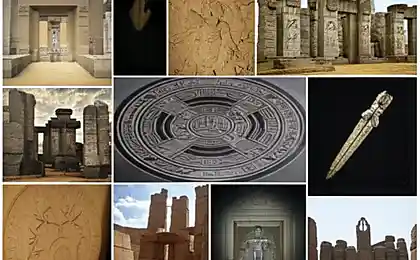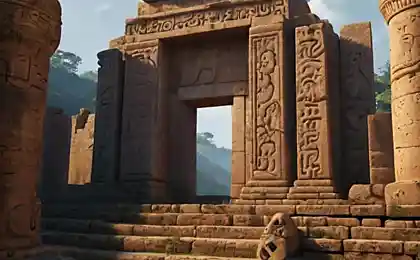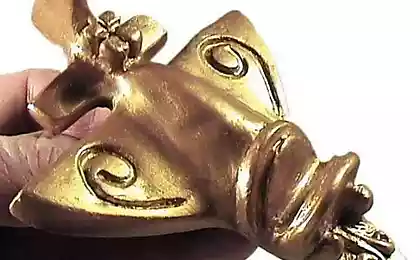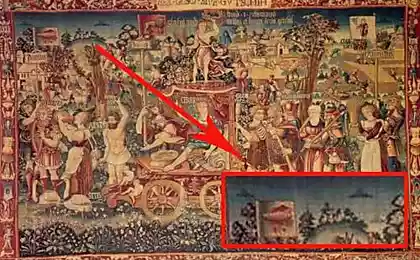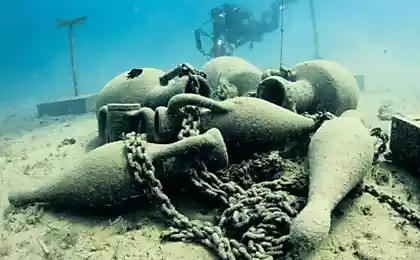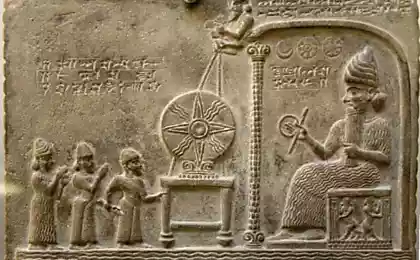262
Secrets of historical artifacts: what do we still not know?
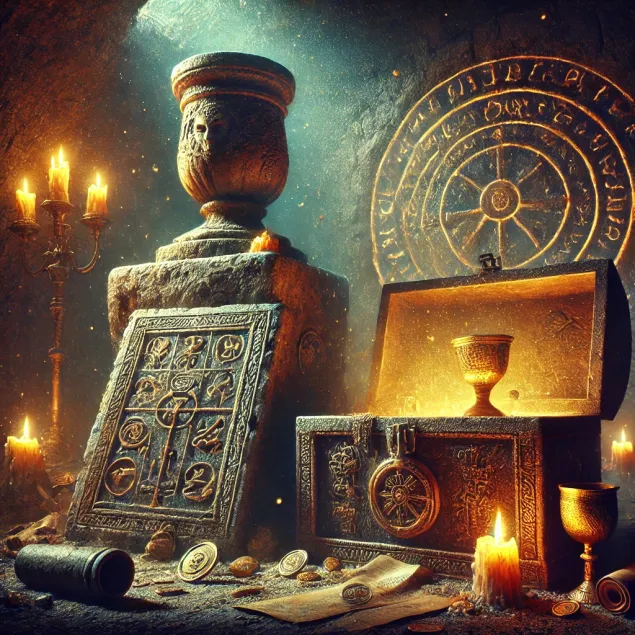
Introduction. Human history dates back thousands of years, and in some regions of the planet – tens of thousands. During this time, people left behind an impressive legacy: buildings, household items, works of art and written evidence, which we call historical artifacts. However, even the most modern scientific methods of research do not always provide exhaustive answers to the questions surrounding these findings. Sometimes the mysteries of prehistoric burials or medieval cultural monuments cause even more controversy among scientists, giving rise to numerous theories and hypotheses. In this article, we will look at a few examples of amazing historical artifacts whose true purpose or origin is still not definitively established. Perhaps they hold the key to understanding how people lived in the past – and, just as importantly, what they thought about the future.
1. The Voynich Manuscript: The Most Mysterious Message in History
Perhaps, no historical document has acquired as many hypotheses as the Voynich manuscript, discovered in the early XX century by the Polish bookseller Wilfrid Voynich. This unusual manuscript, probably dating from the fifteenth century, written in an unknown language (or cipher), includes mysterious illustrations of plants and cosmic diagrams. Despite numerous attempts to decipher the manuscript remains a complete secret. Researchers suggest that the text may be an alchemical treatise, a collection of medical knowledge, or even a mystical work in which each word carries some esoteric meaning. No computer algorithm has yet been able to decipher the language used in the manuscript, prompting many history buffs and linguists to continue working on the clue. The question arises: was the author of the manuscript one of the greatest cryptographers, or are we dealing with a genius hoax?
Missing fragments and new research methods
Modern methods, such as infrared imaging and spectroscopy, allow scientists to study pigments and ink, determining how old the manuscript is and under what conditions it could have been created. But even with all the new technologies, the mystery of Voynich remains unresolved. Researchers continue to rely on linguistic and mathematical analyses, as well as testing various theories of the manuscript's origin. Some believe that all the answers are hidden in her botanical illustrations depicting plants unknown to science. But any conclusions have not yet been confirmed, which means that the Voynich manuscript continues to excite the minds of historians and cryptographers from around the world.
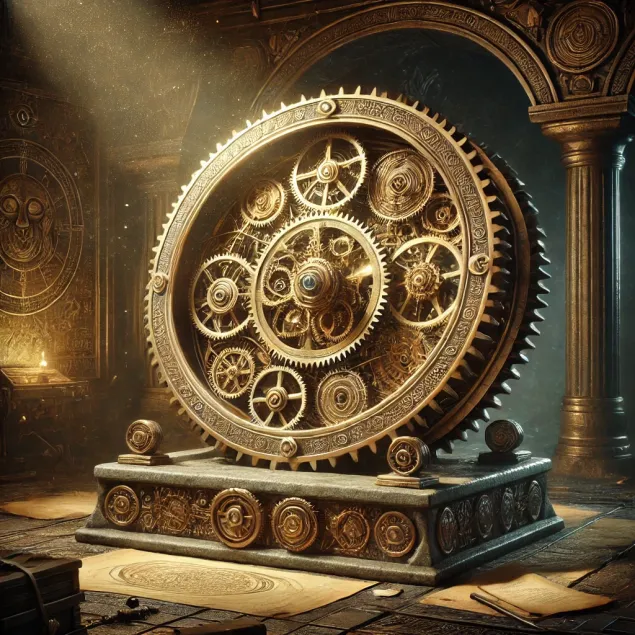
2. Antikythera Mechanism: Ancient Computer from Greece
At the beginning of the XX century, divers working off the coast of the Greek island of Antikythera found among the wreckage of a Roman vessel a bronze mechanism with gears. This finding amazed scientists, as the device, according to modern estimates, refers to approximately the I or II century BC. With such a high level of precision and complexity of construction, it was called an “ancient computer”, because the mechanism could be used to calculate astronomical cycles, phases of the moon and the movement of planets. With the help of X-ray and computed tomographic studies, it was possible to restore part of the structure of the device and reveal the presence of numerous gears with incredibly thin gear engagement.
But even today, many details of the mechanism are not fully clear. One debate concerns whether it was used exclusively for astronomical observations, or whether it could serve as a learning tool to demonstrate celestial phenomena. In addition, it remains a mystery how widespread such devices were in the ancient world. It is only known that exact analogues of the Antikythera mechanism were not found, which suggests the unique nature of this engineering "toy" of the ancient Greeks.
Questions that remain unanswered
- How did such a complex device get on a Roman ship? It may have been part of a military or scientific trophy.
- Who was the author of the mechanism? Scholars debate whether it could have belonged to the school of Archimedes or to later Hellenistic masters.
- Why are there no other examples? Perhaps most of these devices were destroyed by wars or natural disasters.
One way or another, the Antikythera Mechanism emphasizes how far the knowledge of ancient civilizations in the exact sciences has advanced, and points to gaps in our understanding of their technological level.
3. Baghdad battery: lighting fixture or ritual vessel?
In the 1930s, near Baghdad, archaeologists caught the eye of unusual clay vessels, inside which there were cylinders of copper and iron rods. These finds, dating from around the first century AD (or earlier), were called the “Baghdad Battery”. One hypothesis states that when filling the vessel with acid (wine or vinegar), a small electric current was produced as a result of chemical reactions. The structure resembles a simplified galvanic battery.
But the question remains: why did ancient civilizations have such a device? Some scientists believe that these vessels were used for electrochemical gilding or applying thin metal coatings to jewelry. Another theory suggests the possibility of ritual use, because the transmission of current would be enough to cause a “mystical sensation” when touching some ceremonial objects. Anyway, skepticism It is believed that all this is a figment of the imagination: perhaps the vessels were not related to electricity, and the elements inside them were random coincidence – for example, part of the storage of scrolls or documents.
What Experiments Say
Some researchers have tried to recreate the “Baghdad Battery” and proved that it is possible to get about 1-2 volts when filled with an electrolyte. However, there is no direct evidence that this is how it was used. An additional mystery remains the lack of written sources that would describe the technology of manufacturing or destination of such artifacts. Until new archaeological finds or interpretations of ancient texts emerge, the purpose of the Baghdad Battery remains open.
4. Controversial Piri Reis maps: Why did a Turkish admiral paint Antarctica?
The Piri Reis map, dating from 1513, is kept in Istanbul and has long attracted the attention of cartography historians. It shows the west coast of Africa, eastern South America and even parts of Antarctica in detail, despite the fact that Europeans had not officially reached these lands by the time the map was created. The author of the map was Piri Reis, an Ottoman admiral who claimed to have used old sources, including maps from the era of Alexander the Great.
The image of Antarctica’s detailed coastline gives rise to surprising hypotheses, from the assumption of an ancient highly developed civilization to the theory that the map shows simply the “southern continent”, mistaken for Antarctica. Researchers are divided, pointing out the discrepancies in projections and distortions that are characteristic of medieval cartography. Perhaps there was a whole chain of redrawings, where different geographical objects were superimposed on each other.
Artifact or anachronism?
- The theory of ancient navigators. Proponents of this hypothesis believe that there was a forgotten civilization with accurate navigational knowledge long before the Great Discoveries.
- Random coincidence. Some believe that the area of the map, which is interpreted as Antarctica, is simply a combination of the coastlines of Argentina and other southern territories.
- The problem of interpretation. The absence of a single coordinate system in ancient maps often leads to incorrect reading of geographical details.
Be that as it may, the Piri Reis map continues to spark debate among historians, geographers and conspiracy theorists, reminding us that secrets of the past can be hidden even in comparatively well-studied eras.

5. Stone balls of Costa Rica: an example of the “perfect form” from antiquity
In the jungles of Costa Rica in the last century stone balls of different sizes were discovered, sometimes reaching in diameter more than two meters. Most of it is made of granodiorite, a very hard volcanic stone that is extremely difficult to process without modern tools. Scientists still debate how these spheres were created by ancient peoples and why. Some balls were found in a particular order, hinting at an astronomical or religious purpose.
There is a hypothesis that the balls symbolized cosmic bodies and were used in rituals aimed at communicating with gods or ancestors. Others researcher Ideal geometric shapes could have social value and indicate a high level of craft skills. However, we do not have direct written evidence, so the true purpose of the balls of Costa Rica remains a mystery.
Conclusion: The Future of Research and the Undisclosed Pages of History
The world of historical artifacts is full of mysteries that often call into question our confidence in chronology, ideas about the technologies of the past and the abilities of ancient civilizations. Each new discovery or reinterpretation of known objects can fundamentally change our understanding of human history. Modern methods, from radiocarbon analysis and genetic studies to high-precision tomography scanners, can lift the curtain over some mysteries, but do not guarantee complete clarity. Perhaps this is a good thing, because humanity has always sought discoveries and mysteries that excite the imagination and motivate us to continue to search for answers.
The past is not a static museum, but a living source of knowledge and inspiration. And the more questions arise in the study of antiquities, the wider the field becomes for future hypotheses and scientific discussions. With each step forward, we are getting closer to solving mysteries, but there will likely always be details that elude our understanding. This is the charm of history: the deeper we go into the past, the more we realize how multifaceted and incomprehensible it is.
How science helps us understand ourselves better
Small steps to big changes: simple life hacks for self-development

